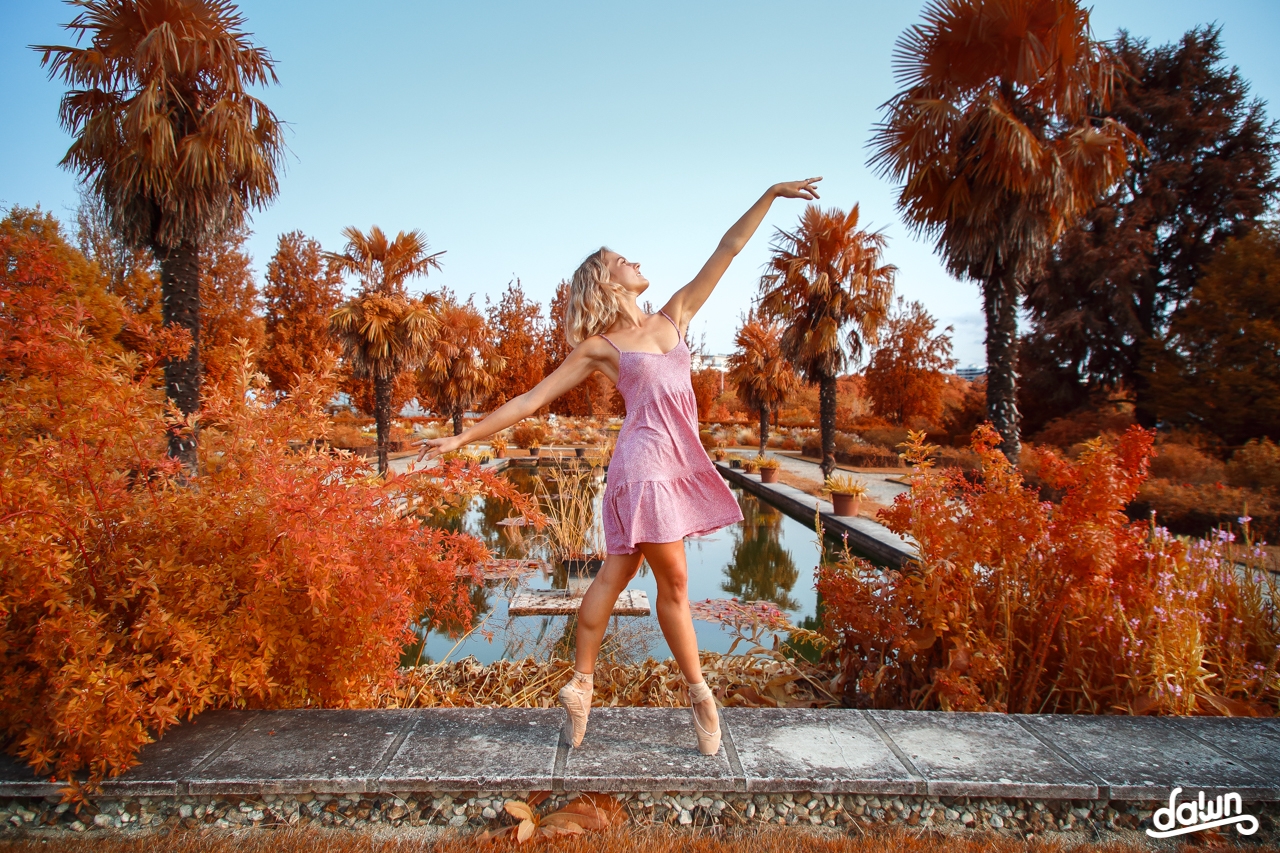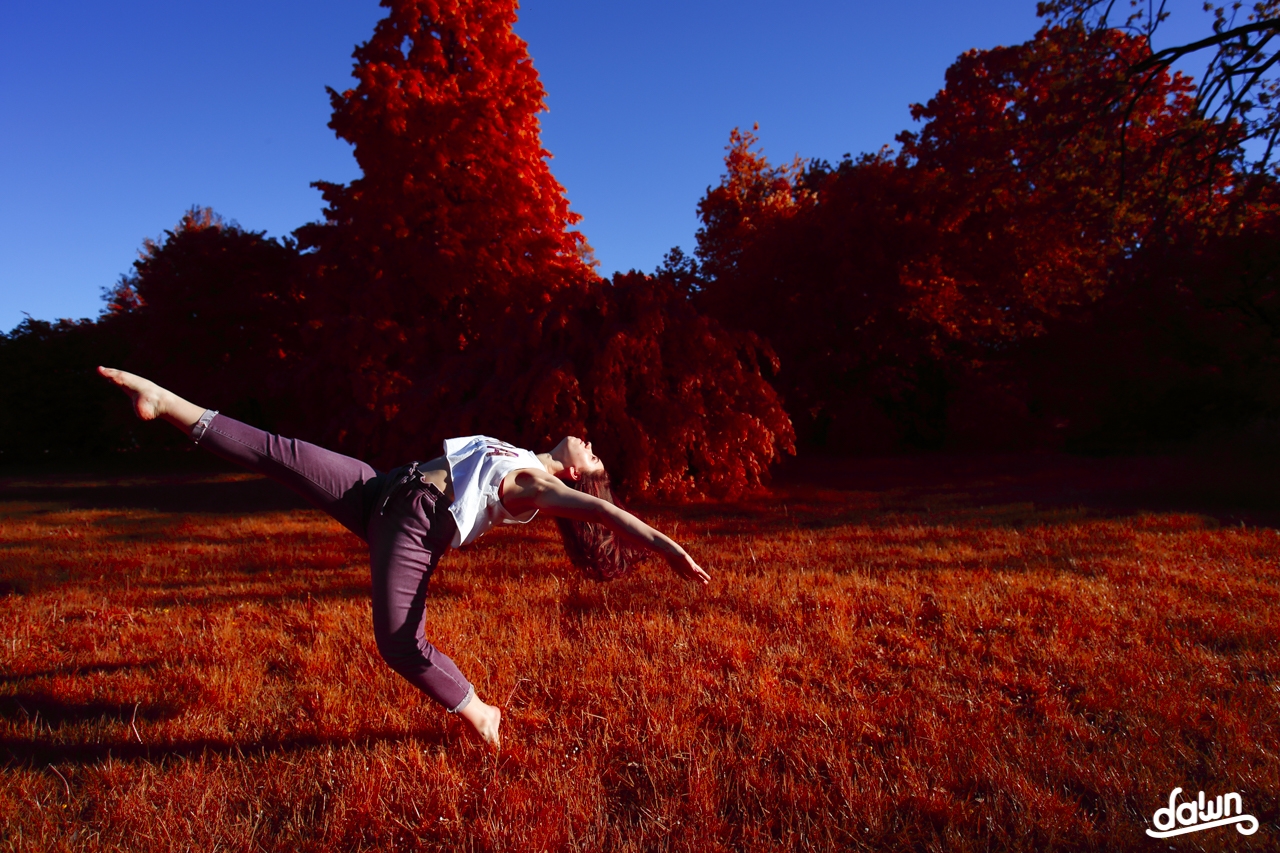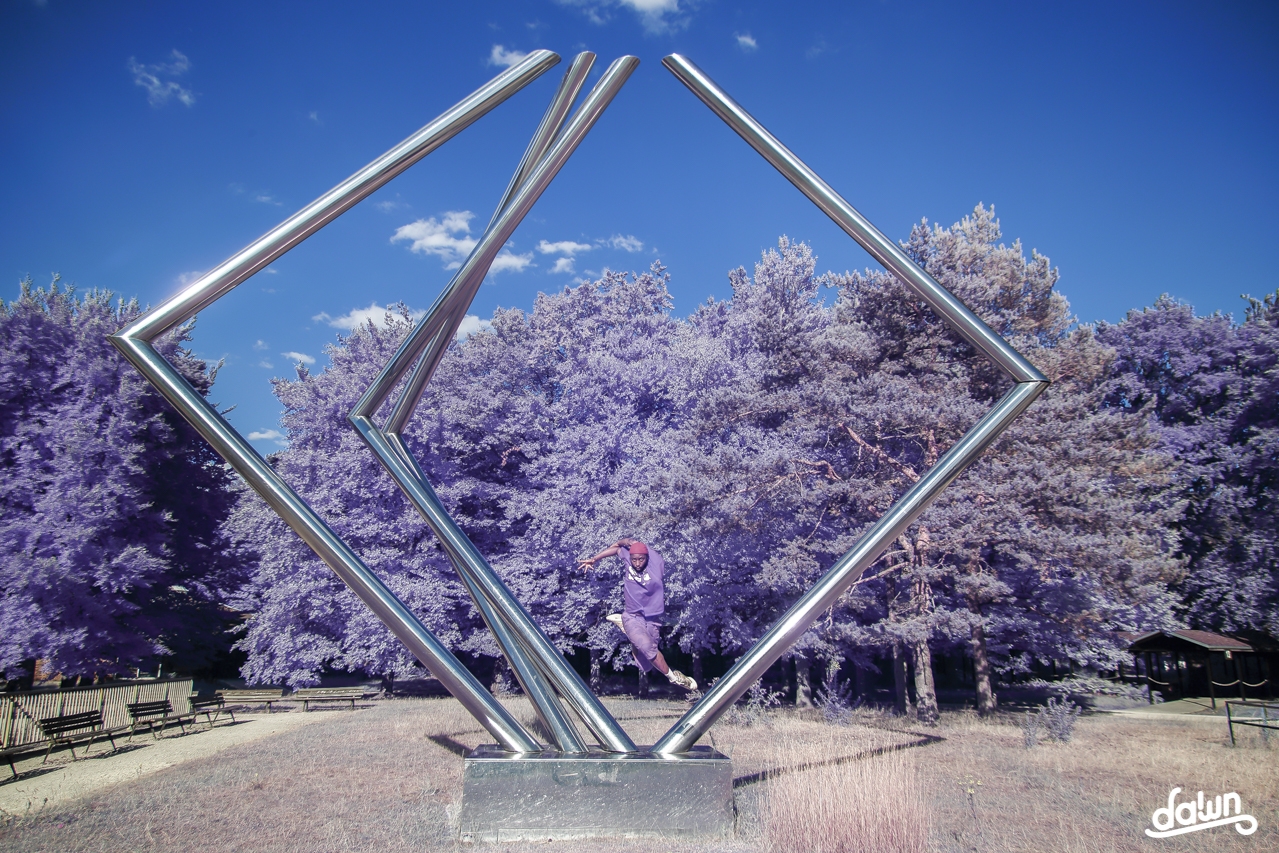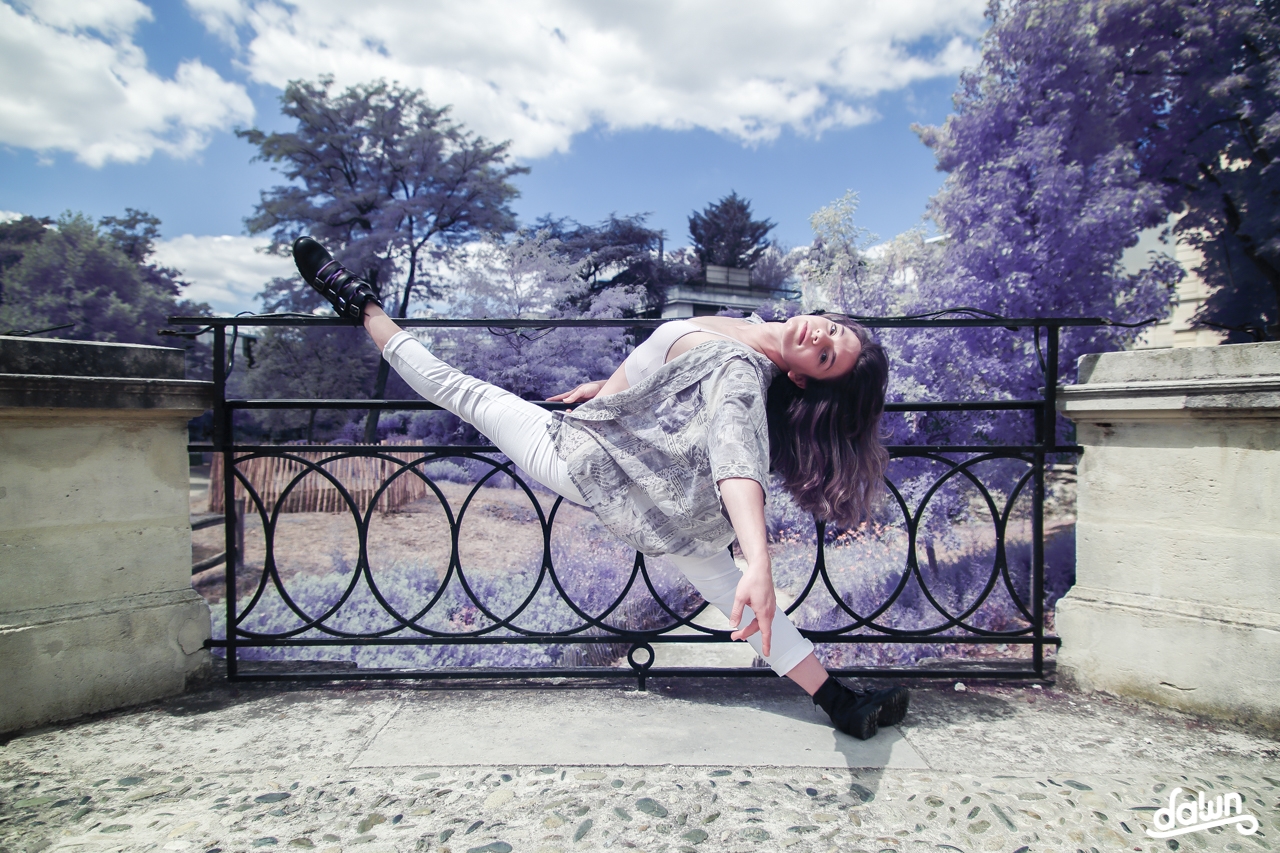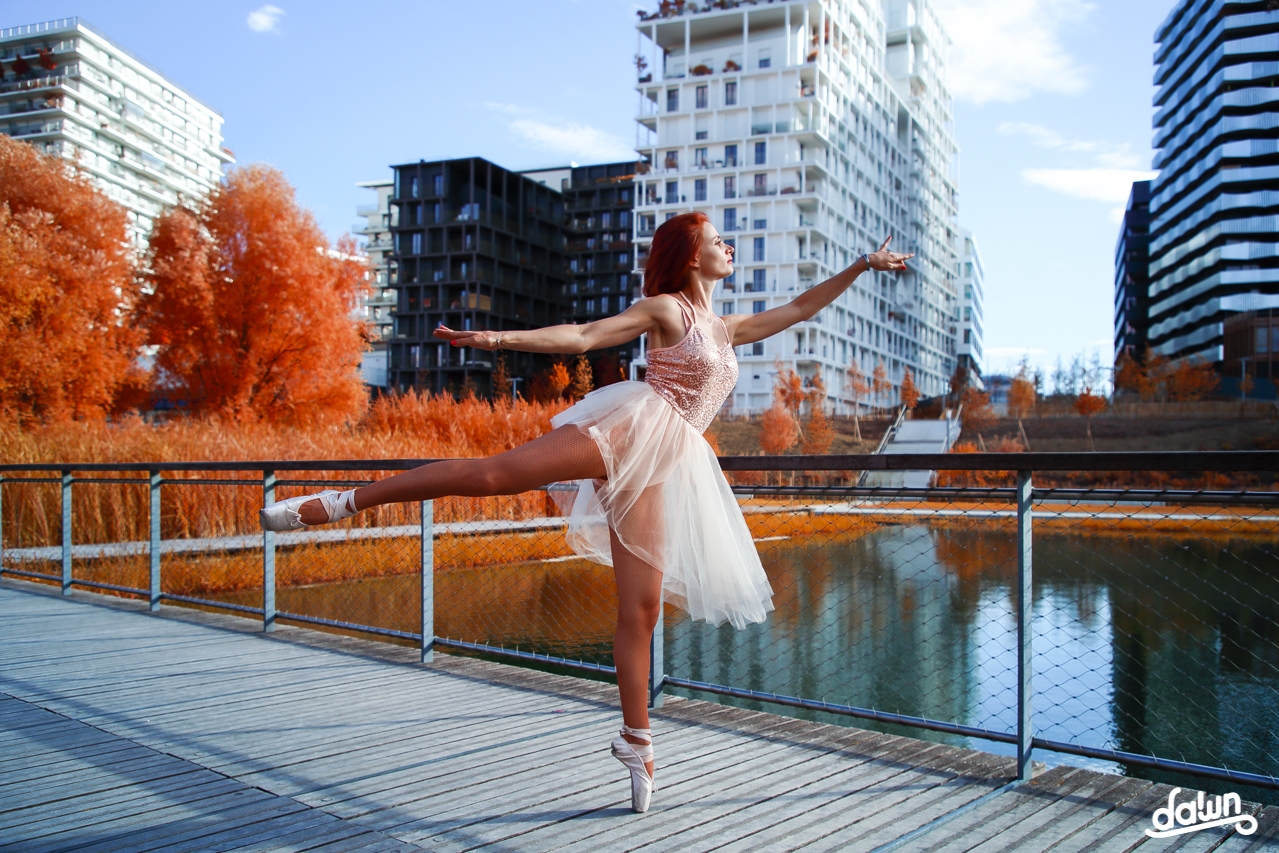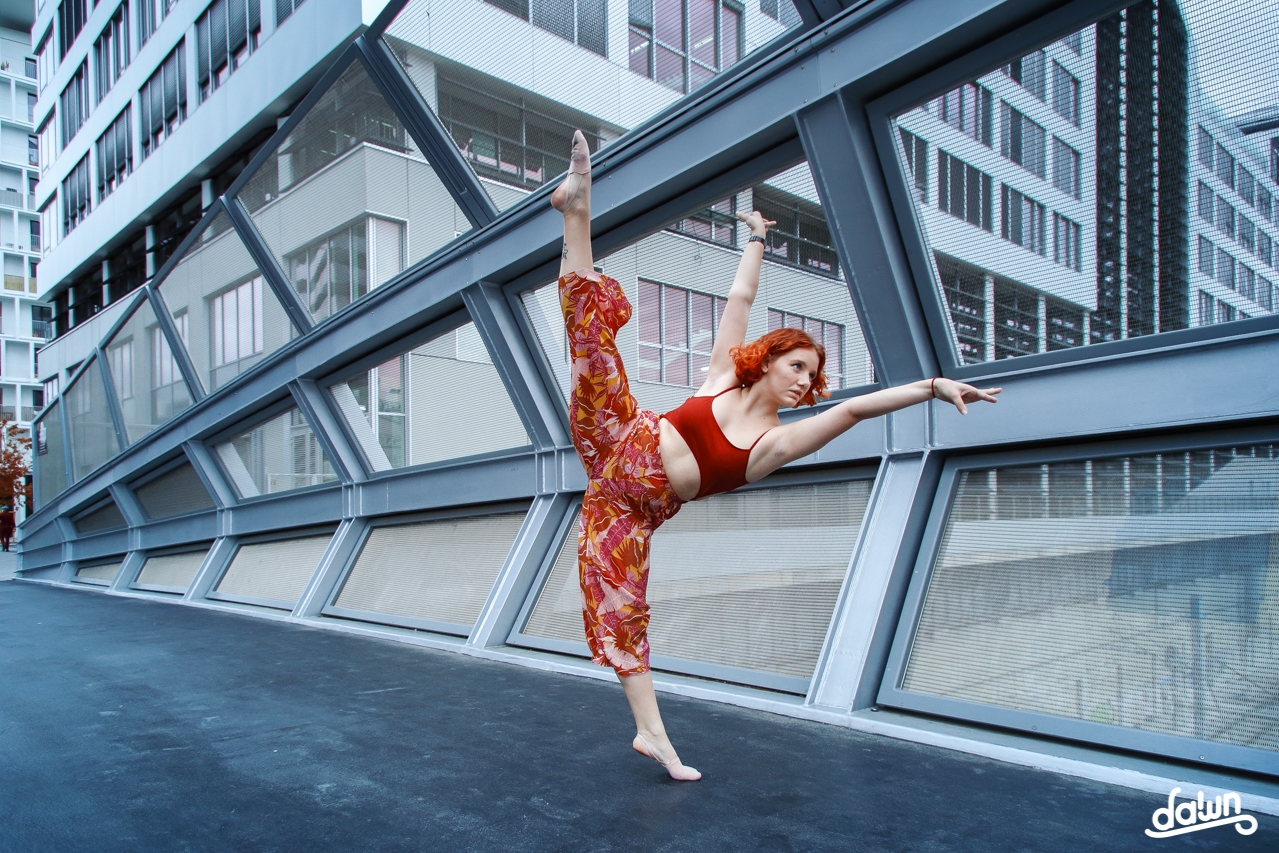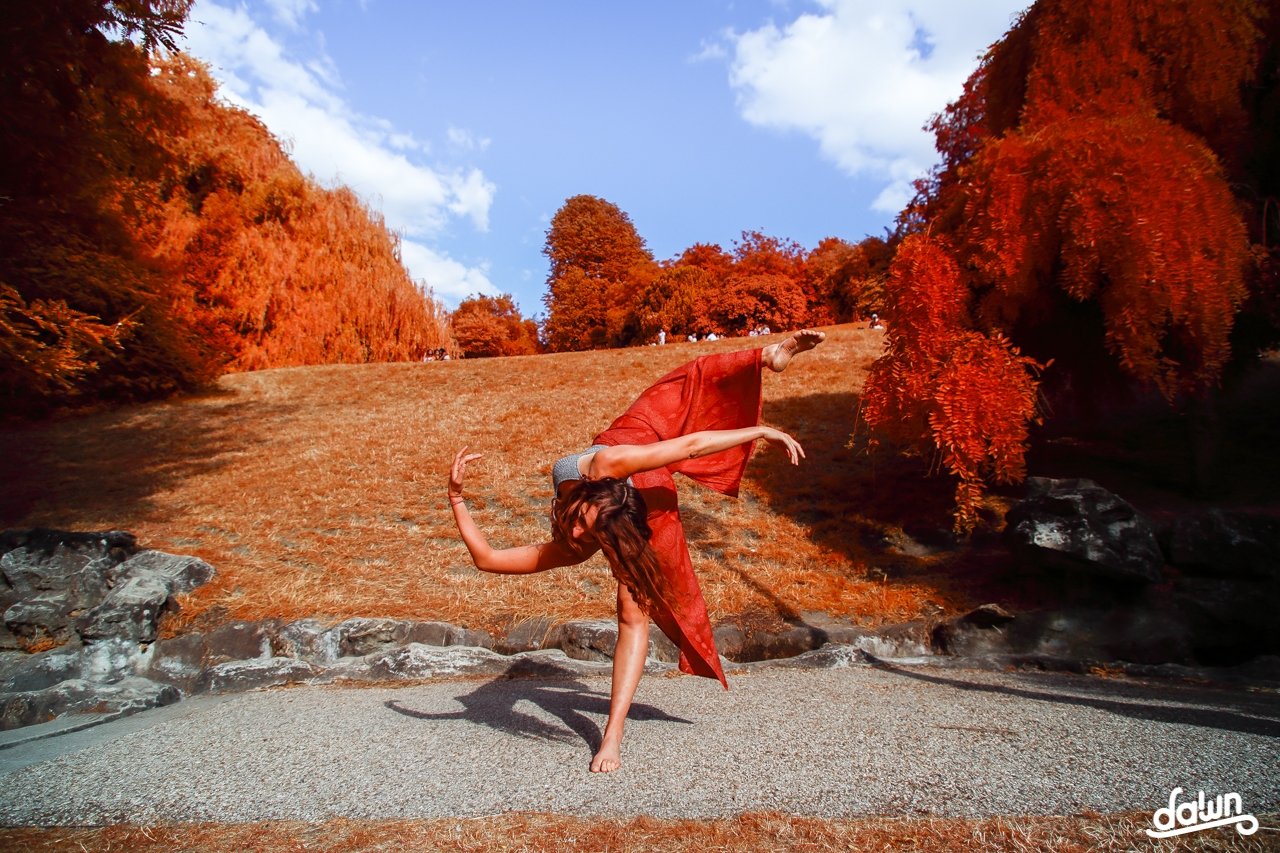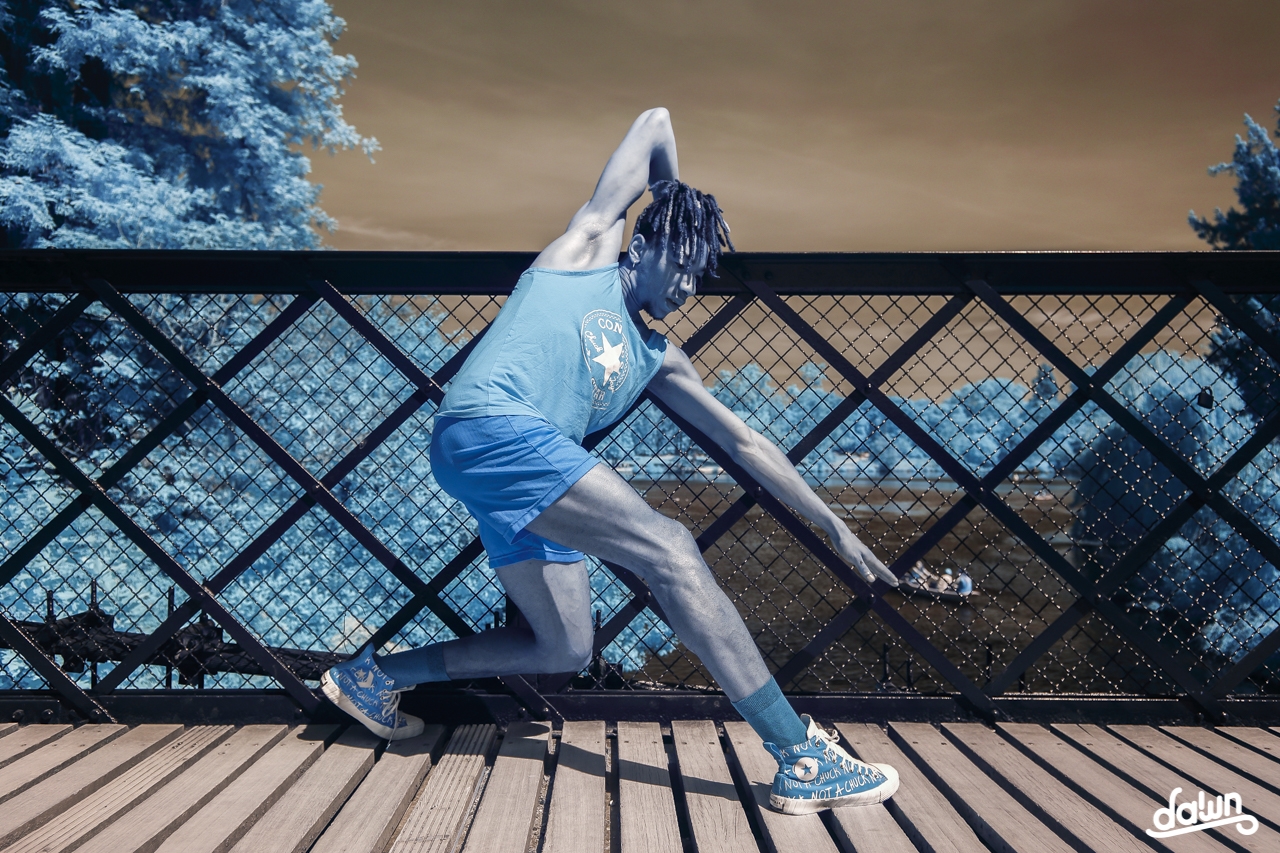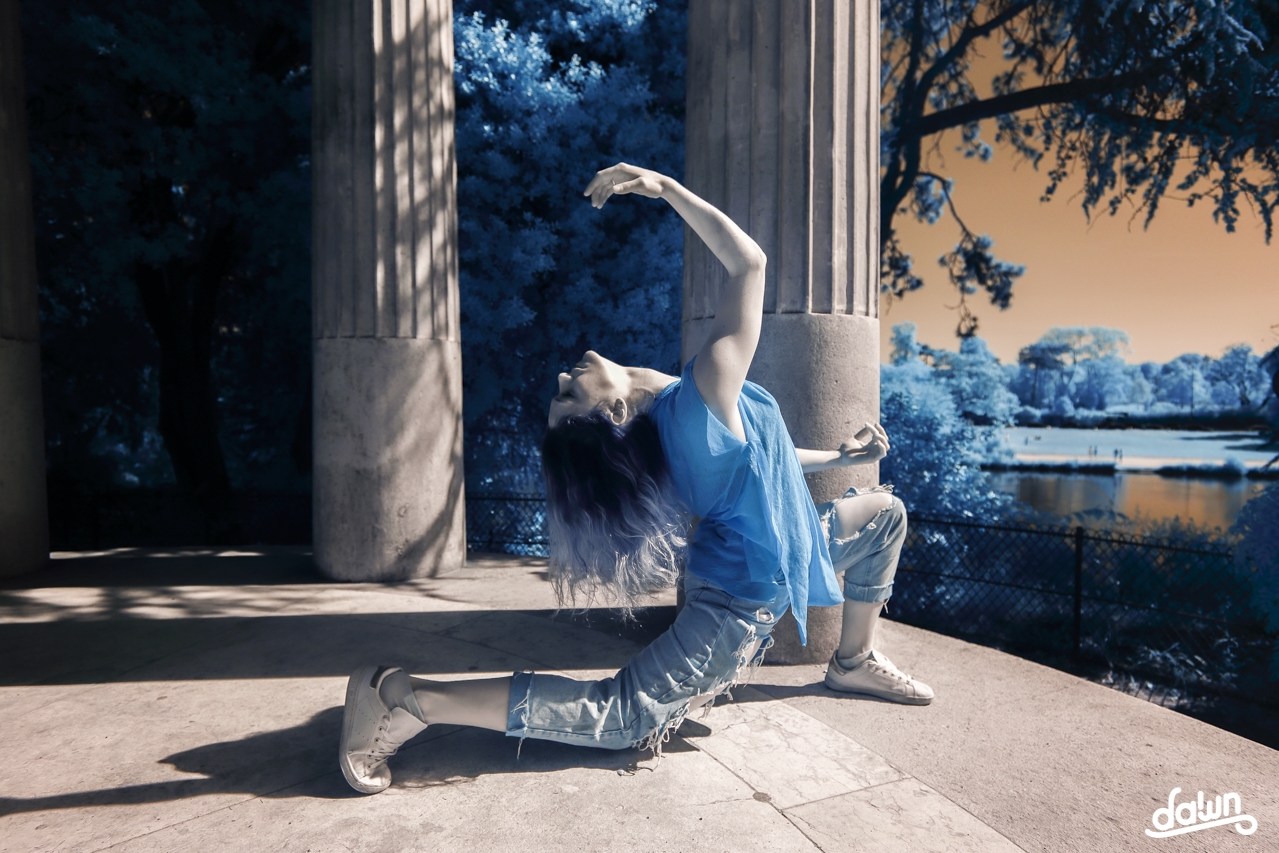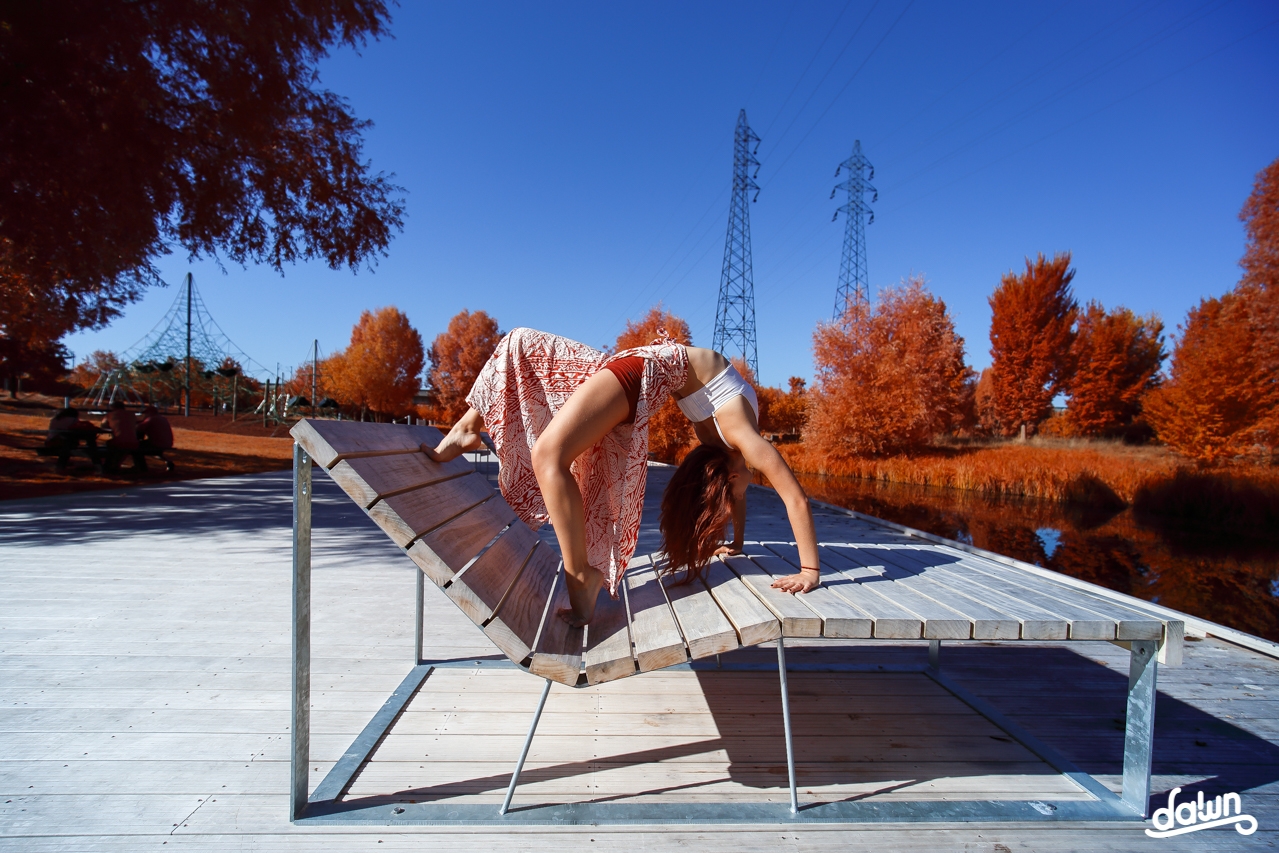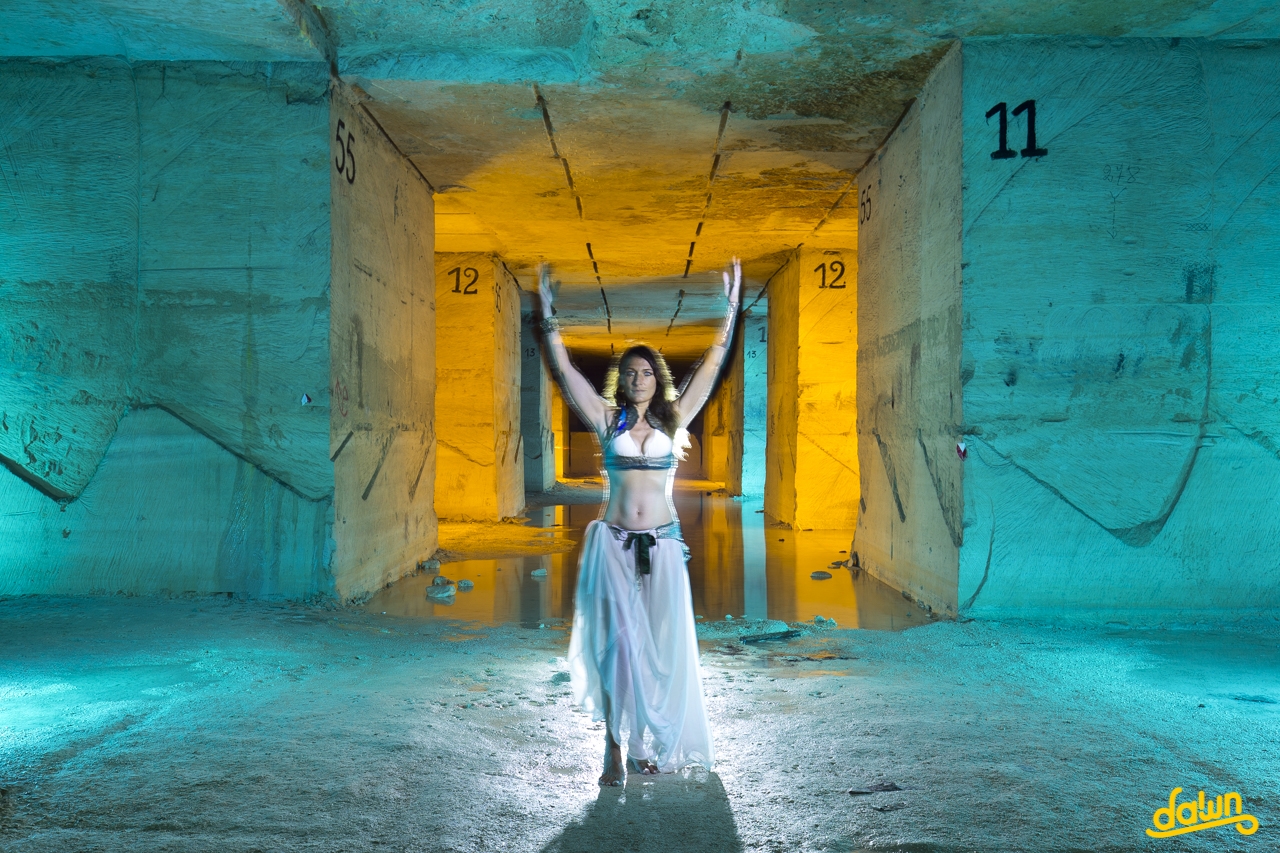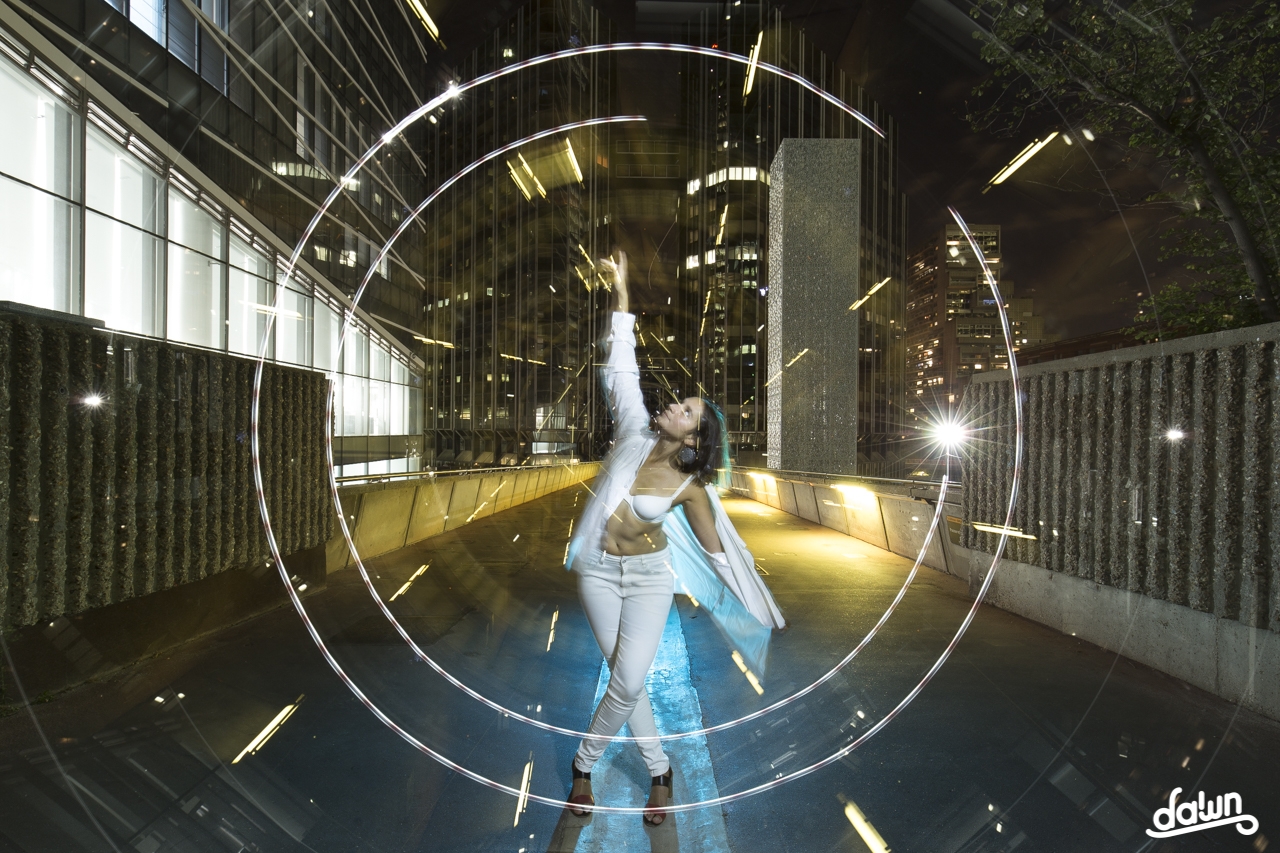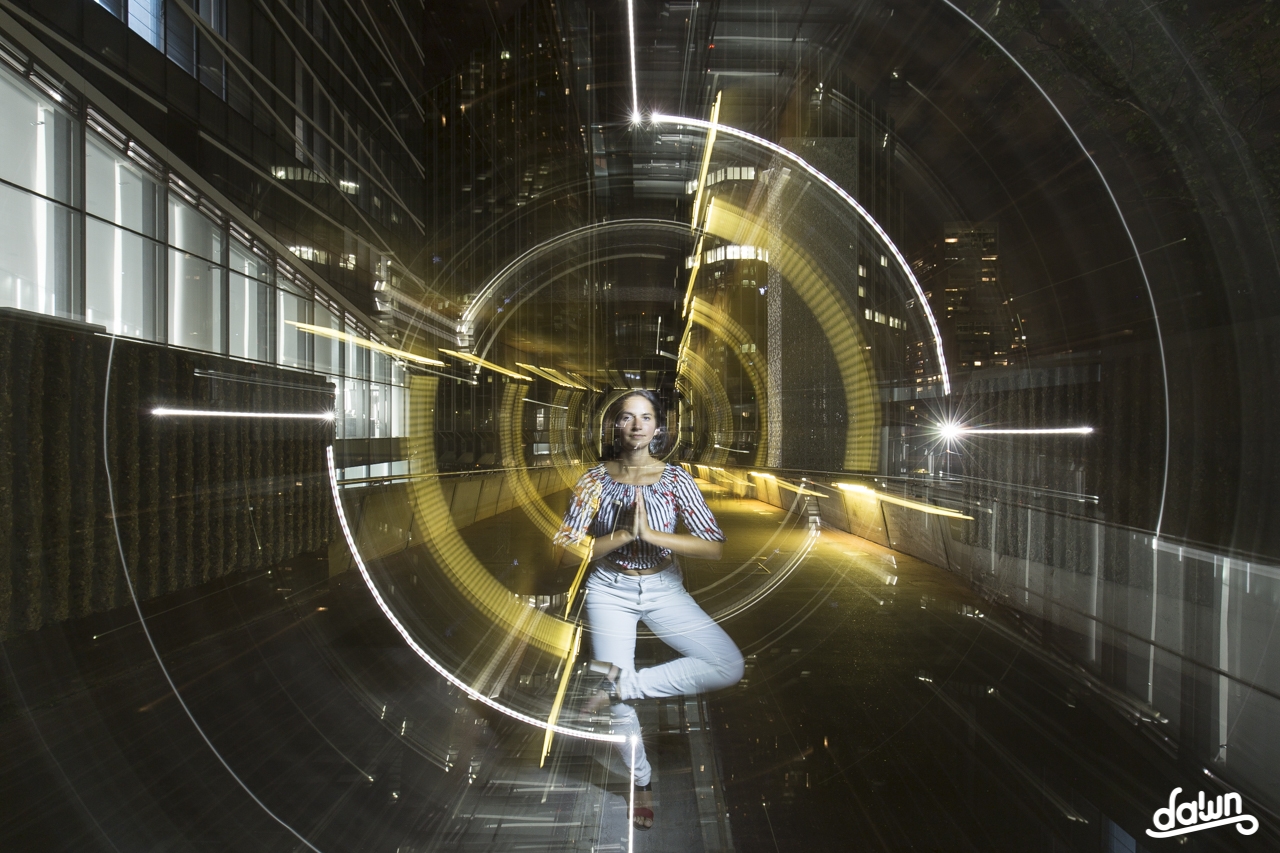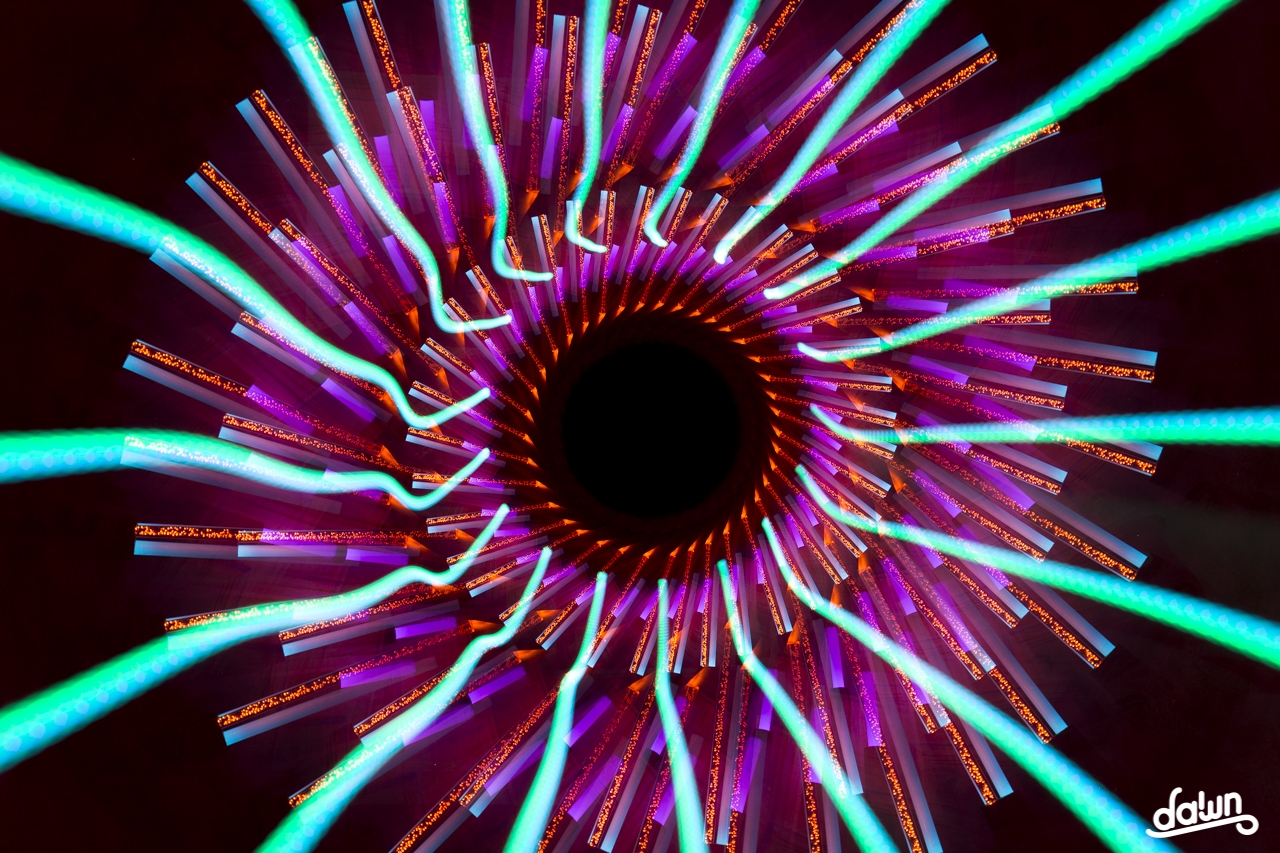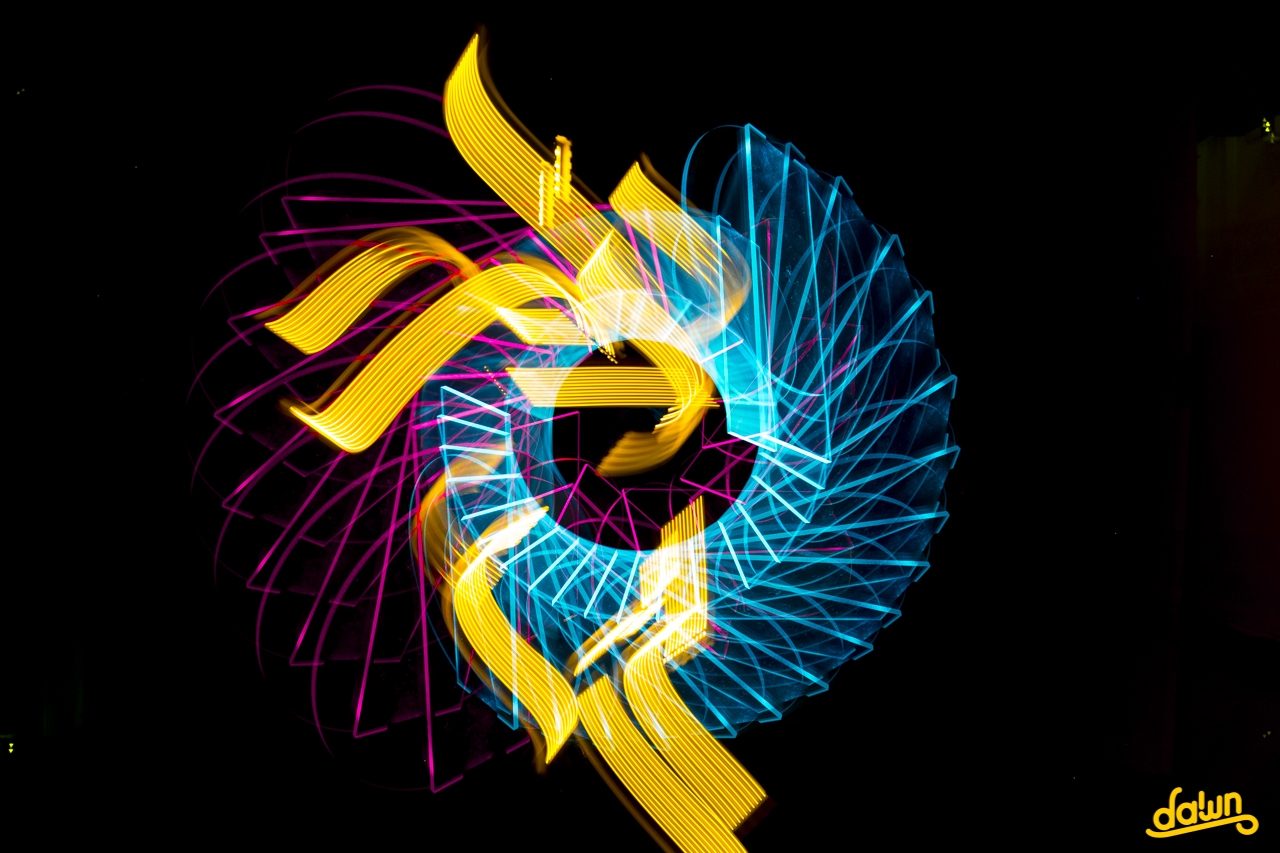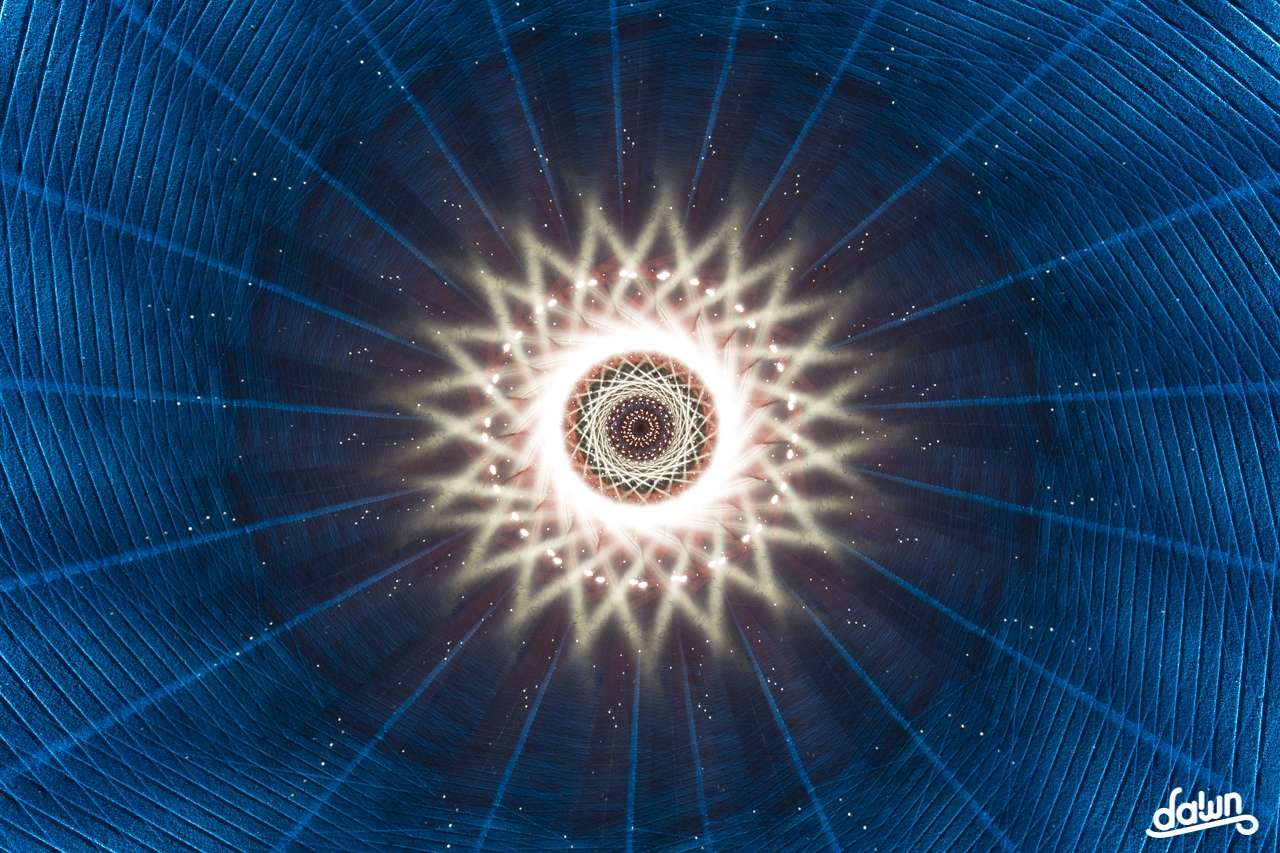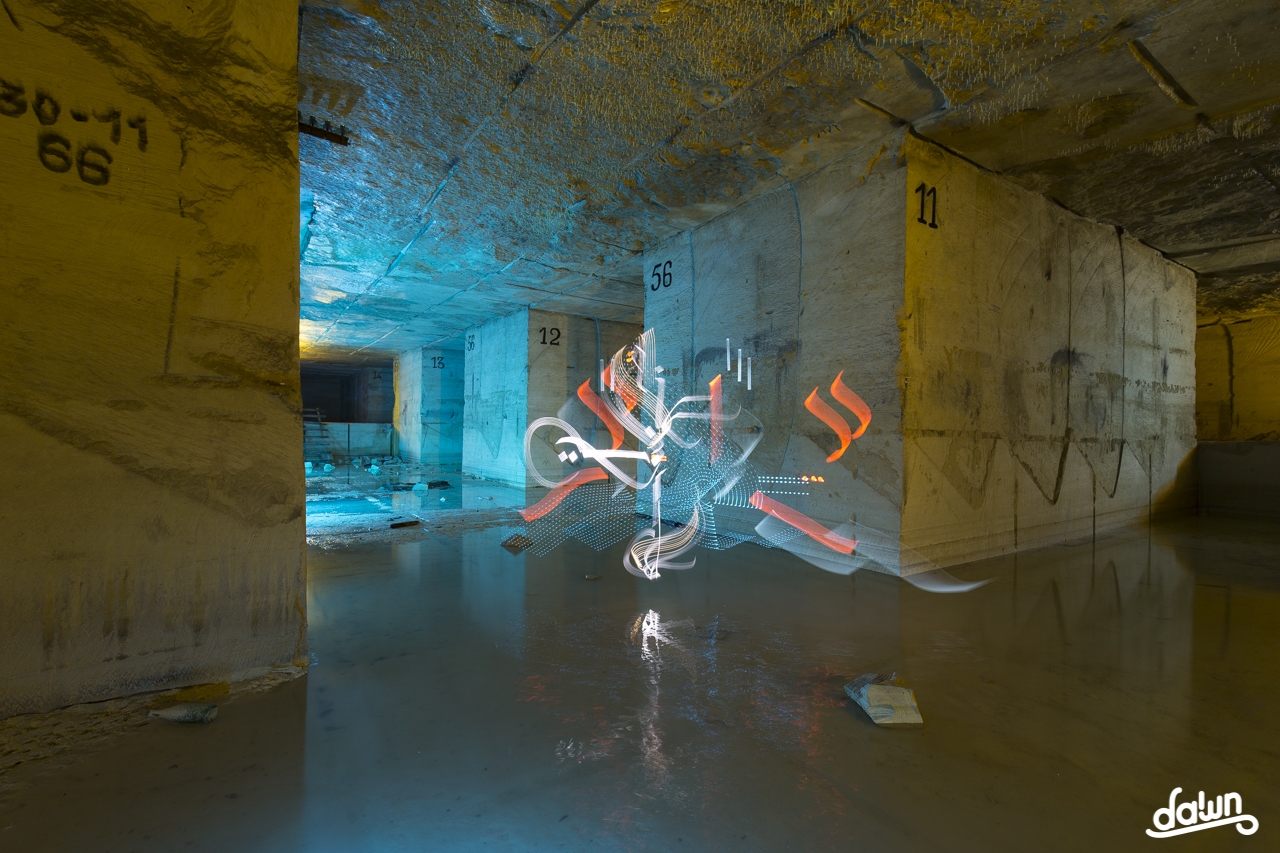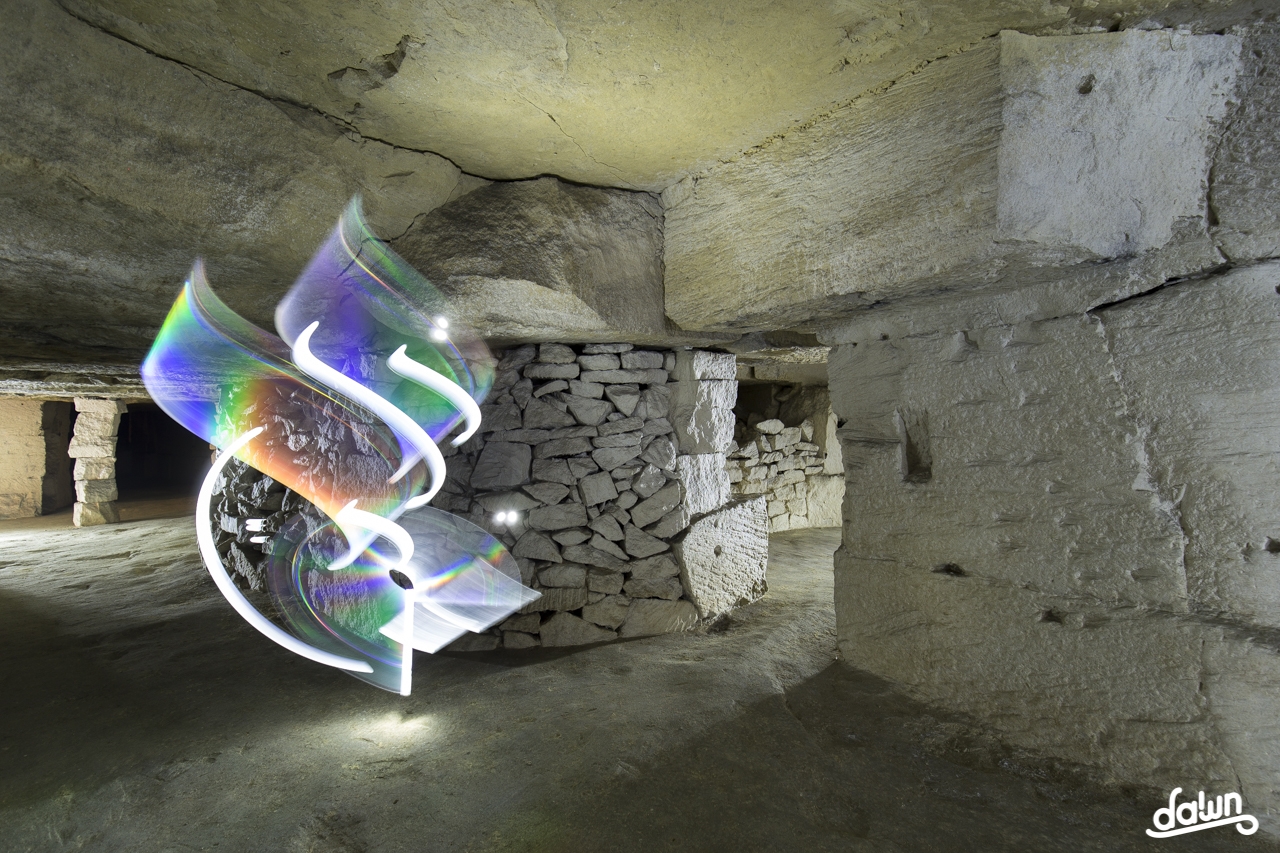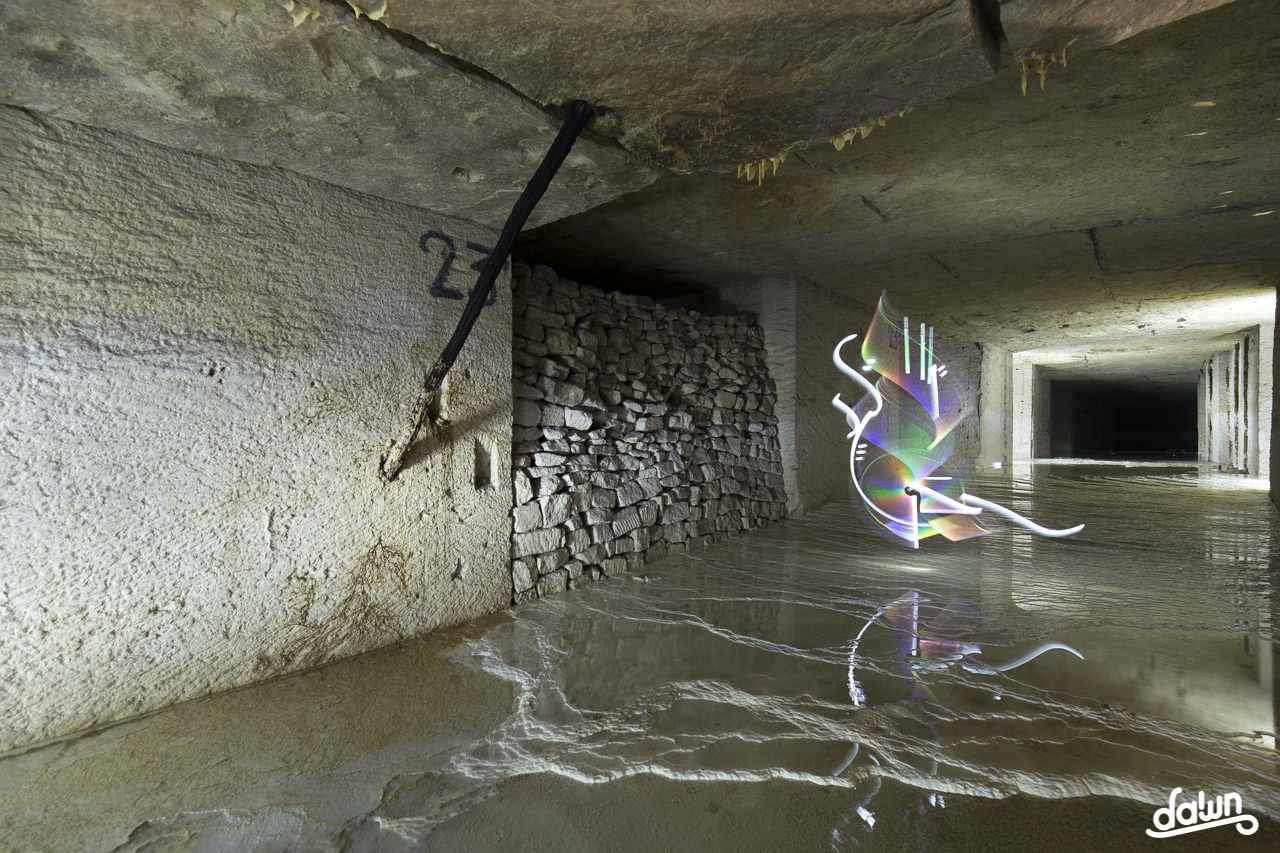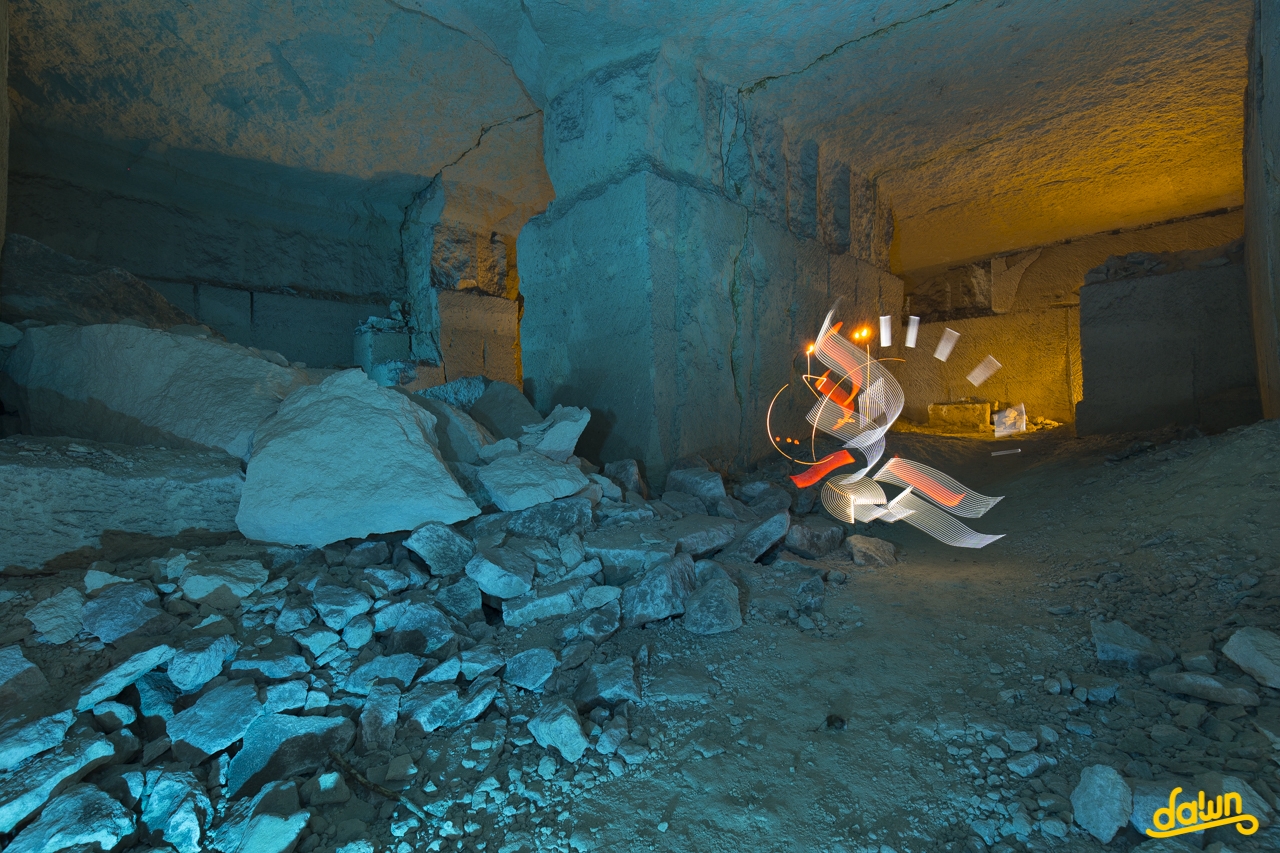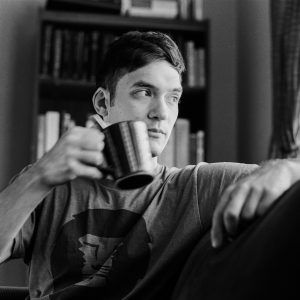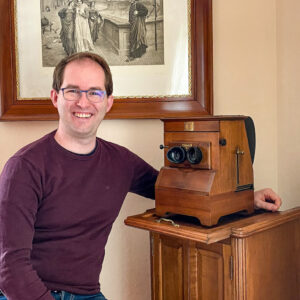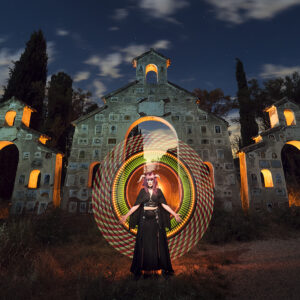Dawn is a French lightpainter and infrared photographer. He discovered lightpainting in spring 2011 and immediately realized the enormous potential of this tool. Dawn says he understands lightpainting as an extension of graffiti with a unique dimension: non-otherness of public space.
You are an infrared and light painting photographer. Not very usual mix of genres. Why have you chosen these genres?
I discovered lightpainting in 2011, during a workshop made by Marko93. He was showing real-time video LP in demo and doing portraits to attendees of the workshop as in introduction to his universe. I was absolutely amazed and instantly took the measure of the power of this incredible tool/technique. Few months after that, I bought a Canon 600D camera and started to do LP on my own.
After a couple of years doing photocalls on festivals, I was looking for something to do during daylight. During that period, I was doing bodypainting and was using it to interact with people and talk a bit about LP. In 2014, I met a very cool guy named Olivier JOLLY, a french artist involved into graffiti, video editing and infrared photography. We met at an exhibition he made in Paris and I had a crush on IR photography, because of the dramatic colors and contrasts. In summer 2016, I decided to begin IR photography as I made a road-trip to Spain and I tried to progess everytime since then.
As I know, both infrared photography and light painting need long exposures. But people on your shots are rather sharp. How do you get this result?
It’s true for lightpainting but not completely for IR caption: you need long exposures if you use a regular camera (because of the inner filters) but you don’t if you use a modified camera. For its versatility, I chose to send my camera to a french specialist whom removed all internal filters. I made the choice of a Full Spectrum conversion : it allows me to work on UV-visible-IR spectrums, separately of mixed together.
To do my IR shots with dancers, I usually use a very short exposure time like 1/1250s or something like that.
As the technician removed the anti-aliasing filter too, my images are a bit sharper that usual.
What filters do you use for infrared photography?
I mainly use the and the Hoya 25A & the Kolari IR Chrome filters.
What equipment do you use for light painting?
Usually, lightpainters carry a lot of gear/tools/accessories. I don’t like that. It’s a choice made because I travel a lot (and it’s better to travel light when you take flights) and mostly because I took the habit to work with minimal equipment. It comes from workshops I made in projects in Paris suburbs during my early LP days: poor kids don’t have money to buy a lot of flashlights/tools (and it’s the same for me too!!) so I showed them how to use imagination and upcycling trash from the garbage to build cool tool for nice LP effects.
Here’s my equipment :
– my Canon EOS 6D Full Spectrum body
– Canon EF 16-35mm f/4L IS USM (mostly for LP) or Canon EF 24-105mm f/4L IS II USM lenses (mostly for IR)
– a Canon RC-E6 IR remote (mostly for LP)
– a tripod for LP (I never use it for IR caption). I use a small Zomei carbon most of the time but I have a solid/big Benro A4770TN for workshops/festivals
– I mostly use a ballhead but I have a Jobu-Design Heavy Duty Gimbal Head Mk IV too, for kinetic purposes
– 2 flashlights (a small Nitecore P12 and a powerful Sofirn BLF Q8 4 5000LM)
– A quiver of homemade lighsabers, lightcones…
– Filters for daylight photography: the Hoya 25A, the Hoya 85B & the Kolari IR Chrome.
Among your light painting I see shots with people and abstract kaleidoscopic arts. I saw images of the last type before but I always thought this is a result of digital manipulation. You declare in your Instagram that they were made by single shot. How to get such images?
Maybe I should communicate better on that but I never edit pictures. To obtain what you call “shots with people and abstract kaleidoscopic arts”, I do everything during a single long exposure. Sometimes I start with the model, sometimes I finish with the model. To get that kind of kaleidoscopic result, I use a gimbal head to make my camera rotate on its axis and I cap the lens or not during rotation to get what I like.
One day I’ll use mirrors to integrate kaleidoscopic renders in my studio LP work.
As I see you don’t allow yourself to edit your images and draw everything in a single shot. Why?
Just because it’s the basic rule in LP. Because I take it as a challenge and I apply it in all types of photography I do.
How do you generate ideas for the new images?
Most of the time, I come to a location and inspiration comes while choosing the frame.
It’s a bit different sometimes when I do collaborations, because some people need to know where they go before starting to shoot.
Do you imagine the result at the beginning?
Always! Especially in LP, you need to anticipate everything before pulling the trigger because you need to prepare the proper tools and the sequencing. LP is a step-by-step discipline: I light this, then that, after that I need to move to this location to draw that thing, etc… My way of working is very empirical.
Could you tell us about your favorite tricks?
My favorite one in LP is the combination of camera rotation/lens cap trick. It’s about integrating a kinetic dimension into LP. It’s like camera tossing but you keep full control of the camera movement. Having the ability to make the camera rotate on its axis gives you a lot a possibilities. In a close future, I’ll push the boundaries of my personal approach of it and integrate side to side or front to back movement of the camera.
In IR, it’s the use of flares in compositions I guess.
What is really important in photography for you?
To live the present moment, alone or with collaborators/friends, during daylight or in the night, at the surface or beneath, and, most of it, having a lot of fun while doing it!
I think, there are some photographers who inspire you. Can you tell us about these people?
To be honest, I don’t look at “conventional photography” at all because I don’t like heavy editing.
I follow dance photographers and Mr NYC Subway and Omar Robles are my favorites of the genre.
In LP, I’m a big fan of my finnish mates Hannu Huhtamo & Janne Parvianen. I like Darius Twin for his incredible hand drawing skills, Julien Breton for his outstanding light calligraphies and the one and only Tim Gamble aka Fade to Black Lightart for pushing the limits of our genre everyday with outstanding ideas and new techniques.
Do you participate in any exhibitions or contests?
I took part in exhibitions in the past but it’s really hard to sell prints nowadays, and really expensive to do as I only show big prints.
Sometimes I take part to contests but most of the time I forget the expiration of the entry period haha. This is something I have to work on for sure.
Is photography your main job?
No it’s not. I decided to be both a photographer and a social worker here in French Britanny.
What are you going to do next?
I recently moved to country life, to do more studio work as I live in a big house and more outdoor sessions at the same time. I hope I’ll be able to meet great dancers and cosplay artists again and, of course, I’ll travel a lot again worldwide when the pandemic struggle will be over.



